Miklos & Tori's Japan Adventures
Cormorant Fishing (commonly called Ukai in Japan) is an ancient fishing technique that originated in China. We are not sure exactly when it originated in China, but we know that it has been used in Japan for the past 1,300 years! Although it takes place in 13 cities in Japan, Gifu City is the most famous place to witness Ukai. This is because the Usho (Cormorant Fishing Masters) have ties to the Imperial Family. They give their fish to the Imperial Family eight times during the course of the fishing season, which runs from May til October every year.
There are 6 families who do Ukai here in Gifu, and these are the same families that have been doing it since it originated here. Each Ukai boat has two fisherman-- father and son. By tradition, each families' eldest son learns how to become a Usho, and eventually takes over for his father. Each family has about 20 Cormorants who live in a Cormorant hut by the families' homes. Between 10-12 Cormorants are taken fishing each day. The fisherman can distinguish between all of their birds, and they take birds that seem eager and well enough rested to partake in the days' fishing.
The practice of Ukai may sound cruel, and for the fish, it is! However, we have been assured that the birds are treated extremely well, like family members to the Usho. Each bird has a rope tied around their neck, and the Usho know exactly how to tie it. The rope is tied tight enough that it stays on, and tight enough the the birds cannot swallow big fish, but loose enough that the birds can swallow and eat smaller
Victoria Robkis
49 chapters
16 Apr 2020
Ukai - Cormorant Fishing
July 15, 2021
|
Gifu City
Cormorant Fishing (commonly called Ukai in Japan) is an ancient fishing technique that originated in China. We are not sure exactly when it originated in China, but we know that it has been used in Japan for the past 1,300 years! Although it takes place in 13 cities in Japan, Gifu City is the most famous place to witness Ukai. This is because the Usho (Cormorant Fishing Masters) have ties to the Imperial Family. They give their fish to the Imperial Family eight times during the course of the fishing season, which runs from May til October every year.
There are 6 families who do Ukai here in Gifu, and these are the same families that have been doing it since it originated here. Each Ukai boat has two fisherman-- father and son. By tradition, each families' eldest son learns how to become a Usho, and eventually takes over for his father. Each family has about 20 Cormorants who live in a Cormorant hut by the families' homes. Between 10-12 Cormorants are taken fishing each day. The fisherman can distinguish between all of their birds, and they take birds that seem eager and well enough rested to partake in the days' fishing.
The practice of Ukai may sound cruel, and for the fish, it is! However, we have been assured that the birds are treated extremely well, like family members to the Usho. Each bird has a rope tied around their neck, and the Usho know exactly how to tie it. The rope is tied tight enough that it stays on, and tight enough the the birds cannot swallow big fish, but loose enough that the birds can swallow and eat smaller
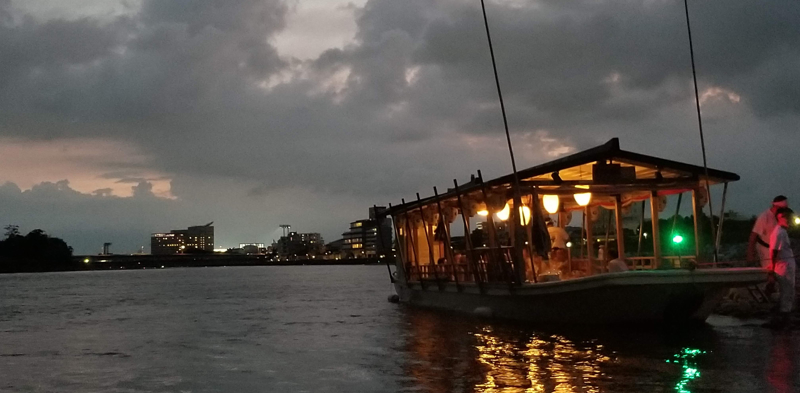
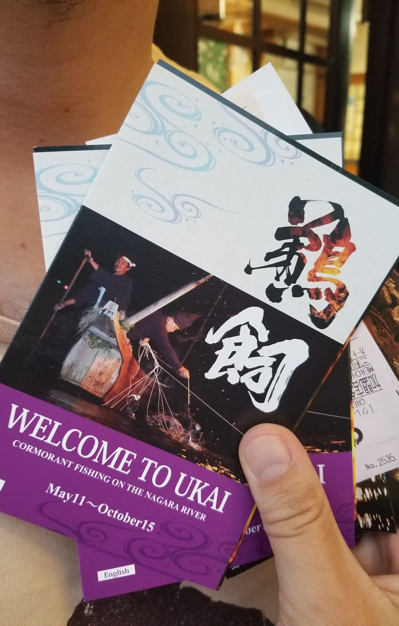
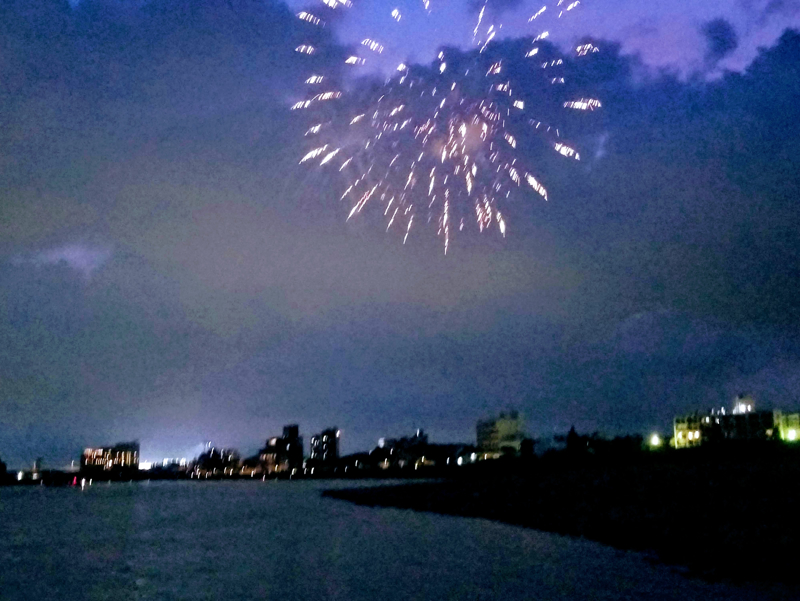
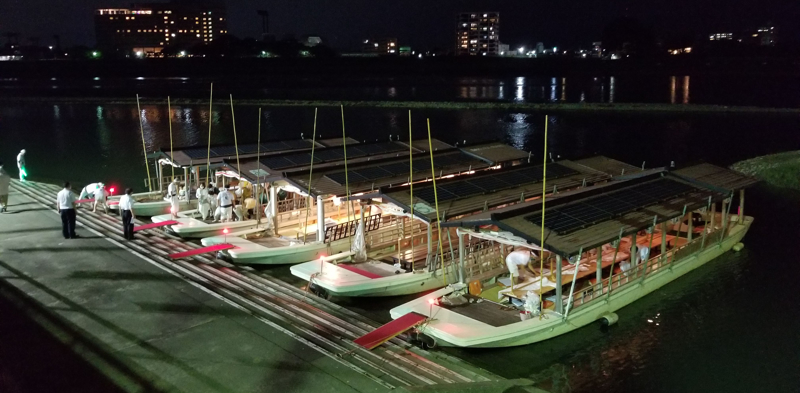
fish. The main fish that the Usho are interested in catching and eating are sweet fish called "Ayu." Fun fact, sea Cormorants are used by each family. Sea Cormorants are larger than river Cormorants, and therefore are better for the task of Ukai.
While there are a lot of similarities between Ukai in China and Japan, there is one big difference-- the time of day. Typically Usho in Japan go fishing in the evening close to dusk. They attach fire lanterns to the side of their boat, this is meant to draw fish to the surface of the water. The Cormorant swim in the water, and once they spot a fish (they have good vision) they dive down and try to catch them!
Since each Cormorant is basically on a rope leash, and there are between 10-12 Cormorants taken to even fishing event, this is quite a task for the Usho! They hold all ropes in their left hand, and use their right hand to move around the rope to prevent them from tangling, returning them untangled to their left hand. The other fisherman is responsible for moving the boat and ocassionally hitting the flame to get rid of burnt down wood, and to keep the fire ablaze.
Once the birds catch a fish, the Usho (the one with the ropes in his hand) pulls the bird on board, to help the bird spit out the fish, and then returns the bird into the river.
The whole process is truly a sight to see! Obviously, this form of fishing is not really sustainable in modern times, but Japan does a wonderful job preserving their culture, and this is something that is worth seeing! The views of the beautiful Kiso River with the city lights in the background are also a sight to see, and then ocne the boats come floating down- ah-mazing! If you come to Japan, we definitely recommend doing this.
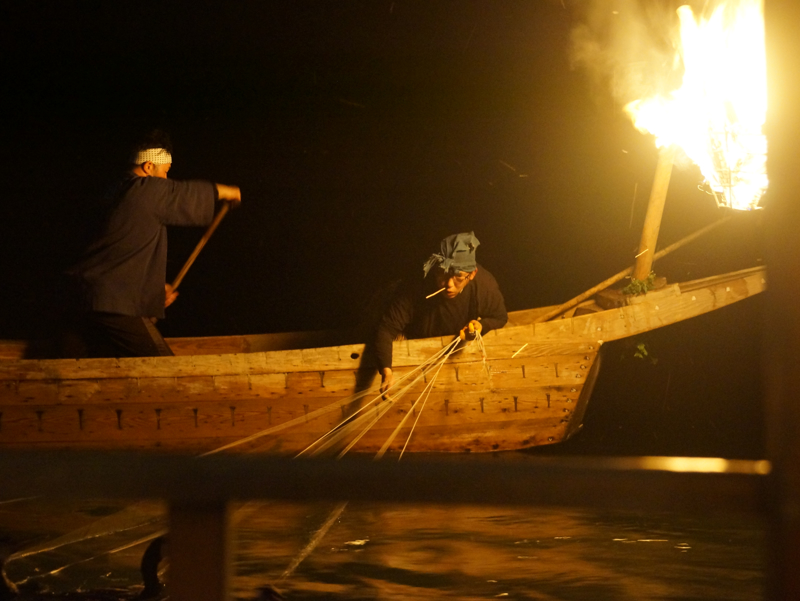
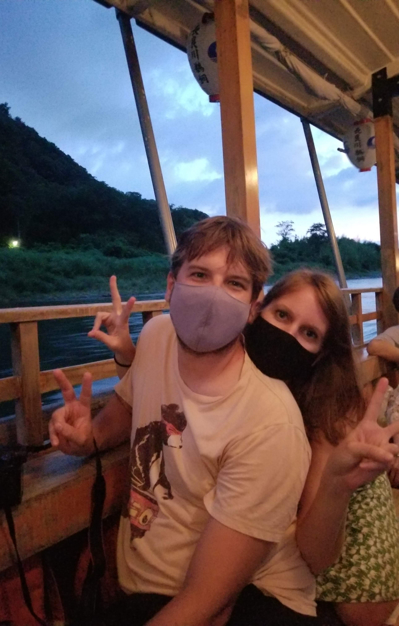

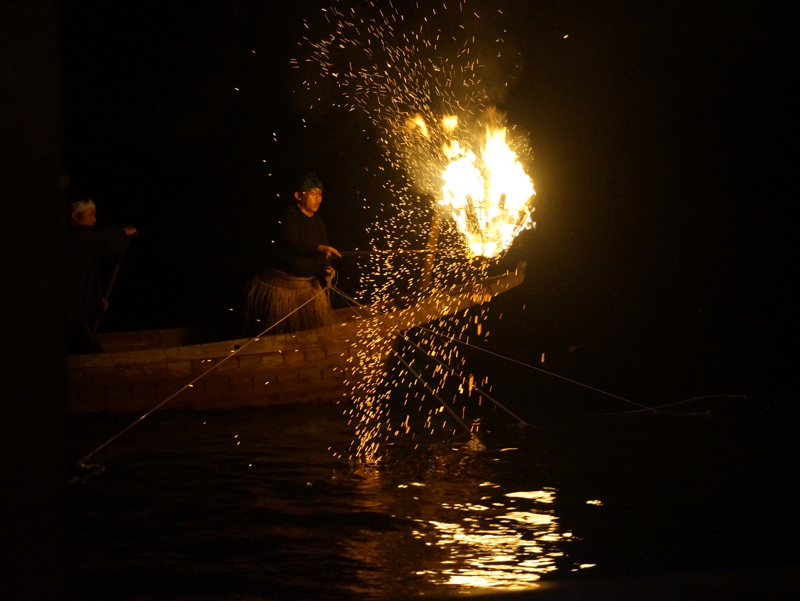
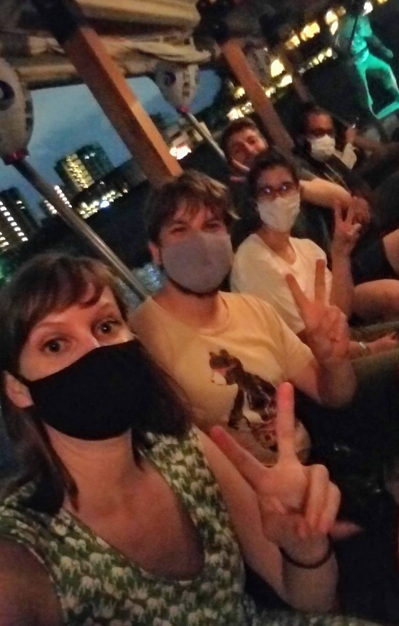
1.
The BIG Move
2.
The First Week
3.
October 1st -- The day everything happened
4.
So Many ROAD BLOCKS
5.
Cool Restaurants
6.
Move In
7.
The old, temporary apartment
8.
Tsurumai Park & Vegan Fest
9.
The day of many deliveries
10.
Being vegetarian in Japan
11.
We're going to the OLYMPICS
12.
Earthquake proof labs
13.
🎃Happy Halloween 🎃
14.
Kyoto Trip
15.
11/11 ... Pocky Day
16.
Yakitori time
17.
Westgate
18.
Peter Pladman's Visit
19.
Our Hike from Magome to Tsumago
20.
Shirakawago & Takayama
21.
Fire Ramen in Kyoto
22.
It's Beginning to Look a lot like Christmas
23.
Nagoya's Cultural Night
24.
🎄Merry Christmas🎄
25.
Christmas Lights
26.
Sapporo Snow Festival
27.
Day trip to Hamamatsu
28.
Tori's B-day Trip
29.
Himeji
30.
Pumpkin Painting
31.
Flavored Soy Milks
32.
Halloween
33.
Kobe
34.
Okazaki
35.
Miklos's JLPT
36.
Rock Climbing
37.
Christmas & New Years
38.
The Site of Reversible Destiny
39.
Nabana no Sato
40.
Skiing & Snowboarding
41.
Visiting Snow Monkeys in Japan
42.
Gifu University
43.
Golden Week
44.
The Sweetest Hubby
45.
Pink Moss Galore
46.
Ukai - Cormorant Fishing
47.
Inuyama
48.
Rice Fields and Sun Flowers
49.
Visiting Northern Japan (Tohoku)
Share your travel adventures like this!
Create your own travel blog in one step
Share with friends and family to follow your journey
Easy set up, no technical knowledge needed and unlimited storage!